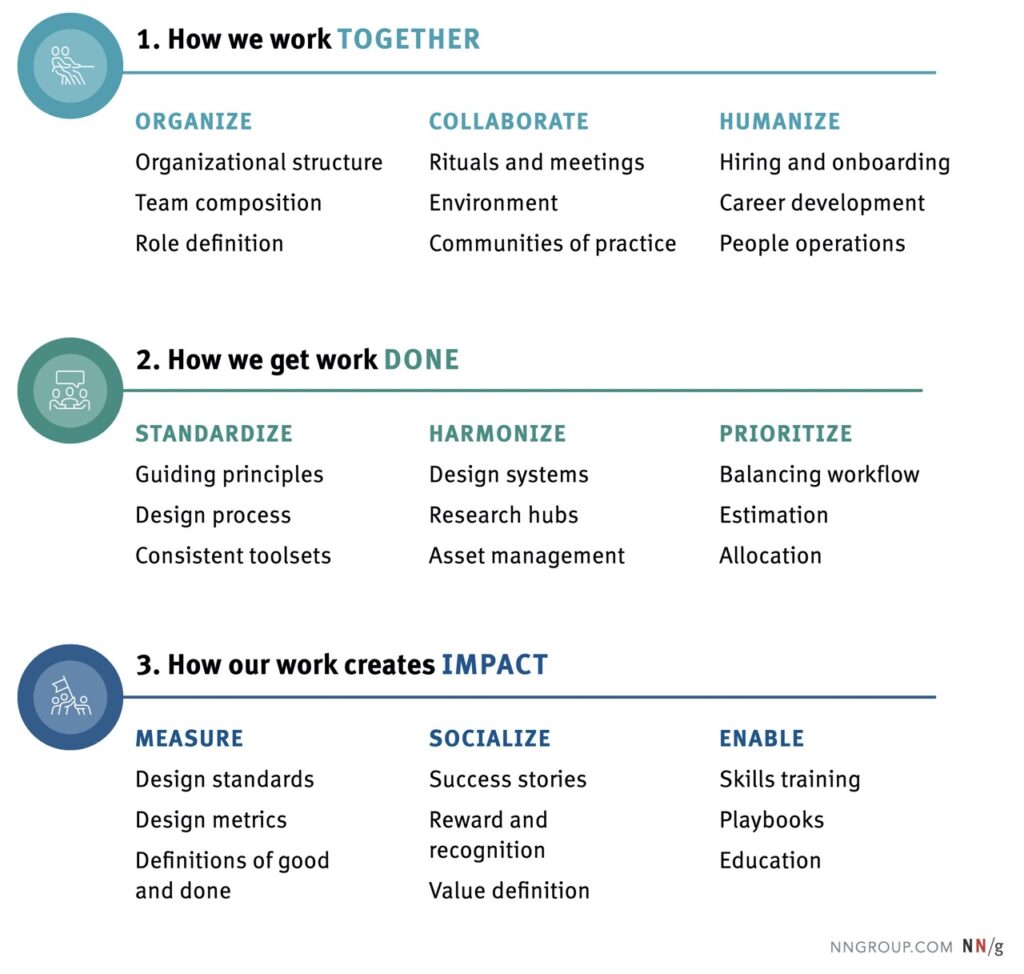Client: Lepaya Learning
Period: 2021-2022
Lepaya learning is one the fastest-growing learning Scale-ups in Europe. When I came to Lepaya I was told that we need to extend the UX team and set up a design system and then we can extend the product team with multiple focused squats. When I joined I realized we needed to do some steps back. Lepaya build a lot of new features by a lot of different people from design and development. This ended up with an inconsistent set of features, no clear ways of working together and not clear who was responsible for what.
Team setup for this project:
- 1 Ux Lead (Mainly advocating the Design system purpose, creating the planning, actively curating design decisions.) 👨🏼💼 My role
- 3 product designers (mainly focussed on UI/UX work in Figma and UX research)
My contribution:
This was one of the main tasks of my role as UX lead at Lepaya. Help to set up and maintain a clear foundation of working with UX within the product team, and have clear processes in place. It was mainly Design OPS work. Besides this task, I had to set up a consistent UX because there was a recent rebranding of the ecosystem of the products. In this case, I mainly focus on the Design ops work, how I approached it, and how I set it up for scale. In my other case, you can read about optimising the design system for Lepaya.
🚨 Constraints during this project:
- A conservative budget for hiring talent made it harder to grow the team
- The tech team were rebuilding the Codebase solely (from native to Flutter) for a long period which made it for the team a bit harder to optimise the way of working on a day-to-day basis.
- I did the design ops work solely so the team could focus on the day-to-day UX work.
- I had to do this on the side of my day-to-day work of managing the overall UX and optimising the Design system. We did not get a full commitment from management to allocate more time for this.
💡 Lessons learned during this project:
- Finding good (local) talent for UX design/product design roles is hard.
- It was hard to convince internally of the importance of stepping back and improving what we have now. It’s logical in a scale-up that you only want to move forward, but you need to optimise before you really can scale up.
- The market for hiring new talents is really competitive and you need to be clear about your salary scale and optimise it on a monthly basis to compete with competitors.
- It is really important for a product team to set up “rules of engagement” after this is clear you can see the velocity of the teams improve.
Understand
We needed to do one step back and understand. How do we pick-up feature requests, how do we prioritize, how do we design in Figma, how do we do the hand-off and overall how do we work together? Before we dived into solutions we picked the topics one by one based on the Design ops menu from the Nielsen norman group.
Approach
We focussed to work on the 3 pillars of Design ops. How we work together, how we get work done and how our work creates impact. With these in mind, we picked them one by one and agreed within the product that this was the right approach. Or the right approach for now until we optimise again.

With this clear way of working in mind, I create the 3 pillars of our confluence with the main important topics first. We published it directly to the public so everybody could see what we were working on.
⚠️ Due to Lepaya company’s private information, I cannot exactly share how we did everything with screenshots, but I wil describe below what we optimised and delivered.
1. How we work together
- We create a Role definition & responsibility overview with clear steps between junior/medior/senior lead roles.
- We defined an overview of Rituals & meetings
(e.g. weekly ceremonies, bi-weekly, monthly activities work and non-work related for team building, office days and how to communicate out on home-work days) - Setup a hiring process and scoring framework for interviews.
- Define an onboarding process to help colleagues get started.
2. How we get work done
- We defined our design & Research process
- Setup a Research hub and strategy how to conduct research
- Setup the foundation for the Lepaya Design system
- Standardized our design toolset
- (e.g. We optimised our Figma design structure and way of working)
- We set up an explanation and baseline for estimation for our Scrum process
(e.g. what is for us an EPic, story or task how many points can it be maximum per category.)
3. How our work creates impact
- We set up a set of UX measurements which we divided into two categories:
- Behavioural KPI’S: Behavioural KPIs express in numbers what a user is effectively doing and how they interact with a product or website.
(e.g. Task success rate, Time-on-task, Time-on-page/screen) - Attitudinal KPI’s: How users feel, what they say before, during, or after using a product, and how this affects brand perception.
(System Usability Scale (SUS), Customer satisfaction (CSAT), Customer Effort Score (CES)
- Behavioural KPI’S: Behavioural KPIs express in numbers what a user is effectively doing and how they interact with a product or website.
- The above measurements were combined as a set of KPI’s
- Session intensity (combination of task success rate/ time-on-task/ time-on-page/screen)
- Clicks to Learn (combination of Task success rate and Time-on-page/screen)
- Learner experience score (combination of task success rate CES/ CSAT after completing a module )
My personal experience of working on this project.